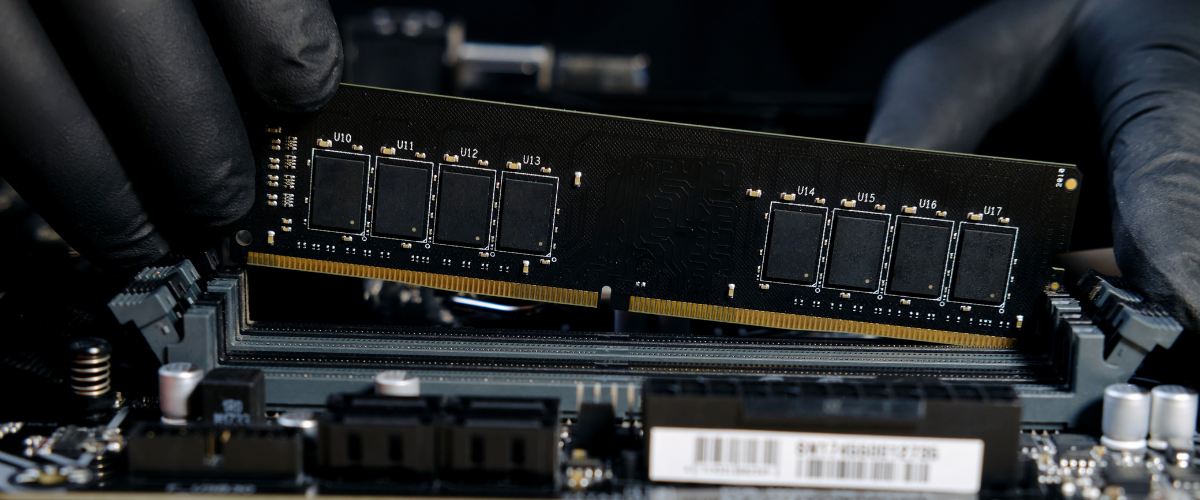

What is Random Access Memory (RAM)?
DRAM, SIMM, DIMM, UDIMM, RDIMM, SODIMM, LRDIMM and NON-ECC
What is what and what is it needed for?
Random access memory (RAM) is an important part of any computer, whether you're using it to play games, stream, or work professionally. But the many different types of RAM can be quite confusing. From DRAM to SIMM to UDIMM, RDIMM, SODIMM, LRDIMM and NON-ECC, it can be difficult to know which type of RAM is right for your system. Don't worry, on our information page we explain everything you need to know about the different RAM types.
Different types of system memory
Here, we will explain the differences between the following types of RAM modules:
- RAM and DRAM
- ECC and NON-ECC
- Unbuffered (UDIMM) and registered (RDIMM)
- SIMM, DIMM, SODIMM and LRDIMM
What is RAM and DRAM?
RAM (Random Access Memory), or volatile memory, is responsible for storing data from programmes or parts of programmes that are currently being executed. However, the stored information is lost when the operating voltage is switched off.
A DRAM (Dynamic Random Access Memory) is the most common type of RAM in PCs and workstations. With DRAM, the stored information is lost quickly even if the operating voltage is maintained, hence the name "dynamic".
What is the difference between ECC and NON-ECC?
In addition to "normal" DDR RAM, which can double the data speed on the data bus (the connection between the processor and the main memory), there is also ECC RAM. ECC stands for "Error Correcting Code". Such RAM has an additional chip that can independently detect and correct DataBit errors during operation without causing a crash or loss of data. This type of RAM is used almost exclusively in servers and professional workstations.
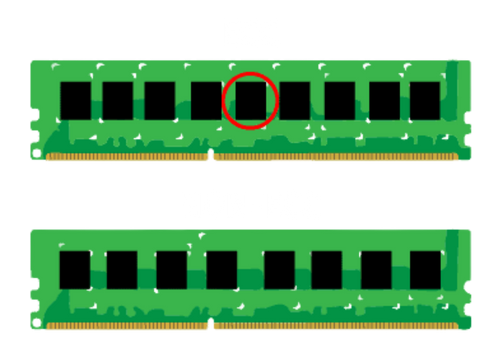

The difference is not only limited to the software, but also to the pin assignment. This differs slightly from that of conventional RAM, but this is recognised by suitable mainboards. ECC memories, unlike NON ECC memories (also called memory without parity), always have an additional chip per 8 memory modules for error detection. This means that while a NON ECC memory always has a number of 2, 4, 8, 16 or 32 chips, an ECC module is always recognised by its 9, 18 or 36 modules.
What is the difference between unbuffered and registered RAM?
Another important distinction is between unbuffered (unregistered, UDIMM) and registered (RDIMM).
An RDIMM takes care of the address lines. It has two register chips built into the bar. This register has the task of constantly selecting the correct memory locations for the requested data. Usually, this task is the responsibility of the chipset of the mainboard. The aim of this technique is to reduce the (electrical) load on the chipset and and to hand over the selection of the exact memory locations to the RAM itself. This avoids possible errors during data transfer. For servers, increased error and failure safety is important, which is why RDIMMs with ECC are often used.
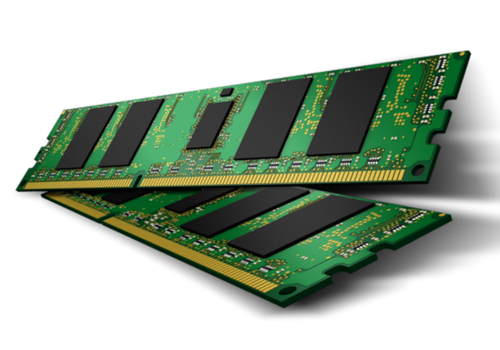

With a UDIMM (Unbuffered Dual Inline Memory Module), no data is buffered, but goes directly to the chipset (without cache). Nowadays, the RAM modules in ordinary PCs are mostly NON ECC UDIMMs.
In terms of price, however, the advantage of an RDIMM over a UDIMM is offset: An RDIMM module costs many times more than a normal UDIMM module. For home use, therefore, UDIMM is definitely sufficient. Although UDIMM and RDIMM have the same memory slots, they cannot be used simultaneously because these two technologies are mutually exclusive.
What do I need to know about these terms: SIMM, DIMM, SODIMM and LRDIMM?
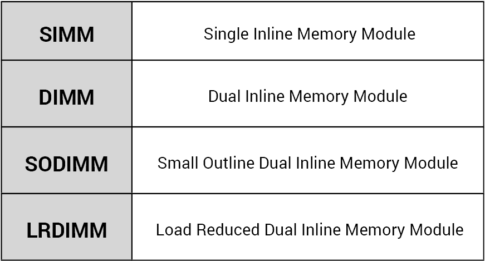

SIMM: In a Single Inline Memory Module, the gold-plated or tin-plated contacts of a SIMM are connected to each other. This creates only a single data path between the module and the mainboard. SIMMs are based on a 32-bit data bus, they are now obsolete and have largely been replaced by DIMMs, which offer higher RAM memory capacities and access speeds.
DIMM: In a Dual Inline Memory Module, which is based on a 64-bit data bus, there is no connection between the contacts. Therefore, with a DIMM there are two data paths between the module and the mainboard, one on the front and one on the back. These RAMs are used in PCs, servers and other computing units.
It should be noted here that SIMMs and DIMMs are not interchangeable because they are of different sizes and must therefore also be plugged into separate socket types.
SODIMM: Small Outline Dual Inline Memory Modules are memory modules that are mainly used in laptop and notebook systems or mini ITX mainboards because they have a more compact design than the "usual" DIMMs. They are usually built on a circuit board measuring approx. 68 mm x 30 mm. SODIMMs are also available with ECC and ECC-registered technology.
LRDIMM: Load Reduced Dual Inline Memory Modules are used for stable server systems with large memory capacities. LRDIMMs are to replace the conventional RDIMMS in the future. Compared to RDIMMs, LRDIMM memory technology allows significantly more memory capacity in the server. The central component of the LRDIMMs is an isolation memory buffer (iMB), which functions like a conventional registered DIMM memory.
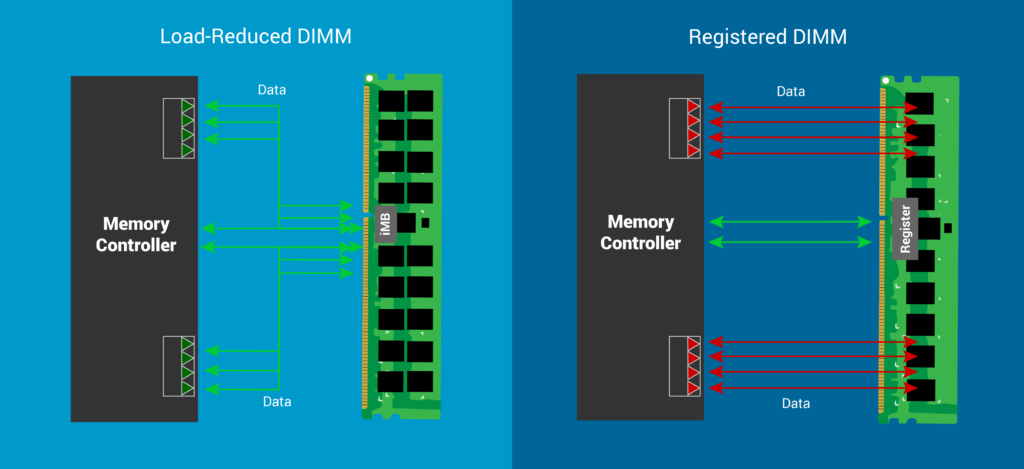

The iMB is responsible for the address lines, the control signals and the actual data lines from the northbridge of the server system. Due to this technology, an LRDIMM places much less load on the server than an RDIMM. In addition, an LRDIMM also uses ECC technology.
Attention, an LRDIMM does not work simultaneously with RDIMM or ECC UDIMM.
